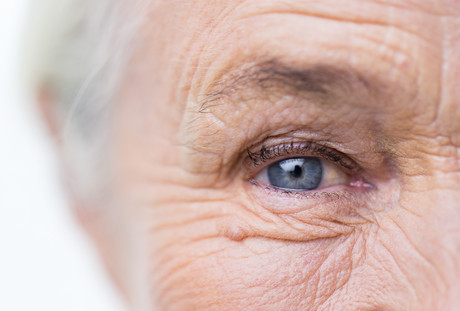An eye test for Alzheimer's

Researchers at Macquarie University and Edith Cowan University (ECU) will be the first in NSW and Western Australia, respectively, to have access to a retinal-scanning camera that can identify beta-amyloids, known to be an indicator of Alzheimer’s disease.
The current gold standard for identifying biological markers of Alzheimer’s disease includes positron emission tomography (PET) for brain amyloid imaging and cerebrospinal fluid (CSF) analysis. Both PET amyloid imaging and CSF analysis can detect Alzheimer’s disease 15–20 years before clinical onset. However, these approaches are expensive, invasive and not widely available, which precludes them from routine clinical use — hence the need for alternative screening options.
“There is a real demand within the community for it to be possible to detect Alzheimer’s early, and in a relatively simple, non-invasive way,” said Ralph Martins, Professor of Neurobiology at Macquarie University and Foundation Professor of Ageing and Alzheimer’s disease at ECU.
“We need a reliable, and more readily accessible, sensitive biological marker to make early diagnosis possible in order for therapeutic interventions to be effective.”
Using a hyperspectral camera from Optina, Professor Martins and his retinal imaging team will work to develop a simple eye test for Alzheimer’s screening within the population. The NASA-inspired technology allows localisation of structures and biological molecules in the retina using their specific spectral signatures — a feature that is currently not available in other commercial retinal cameras.

“Having access to these cameras gives us the real potential to explore the identification of a protein in the brain called beta-amyloid, known to be linked to Alzheimer’s, that can be viewed in the eye well before the onset of memory impairment,” explained Professor Martins.
Professor Martins said the camera could identify other disorders, such as age-related macular degeneration, glaucoma, diabetic retinopathy. It could also have applications in the monitoring of patient response to new and future therapies.
A non-destructive way to locate microplastics in body tissue
Currently available analytical methods either destroy tissue in the body or do not allow...
Rapid imaging method shows how medicine moves beneath the skin
Researchers have developed a rapid imaging technique that allows them to visualise, within...
Fluorescent molecules glow in water, enhancing cell imaging
Researchers have developed a new family of fluorescent molecules that glow in a surprising way,...





